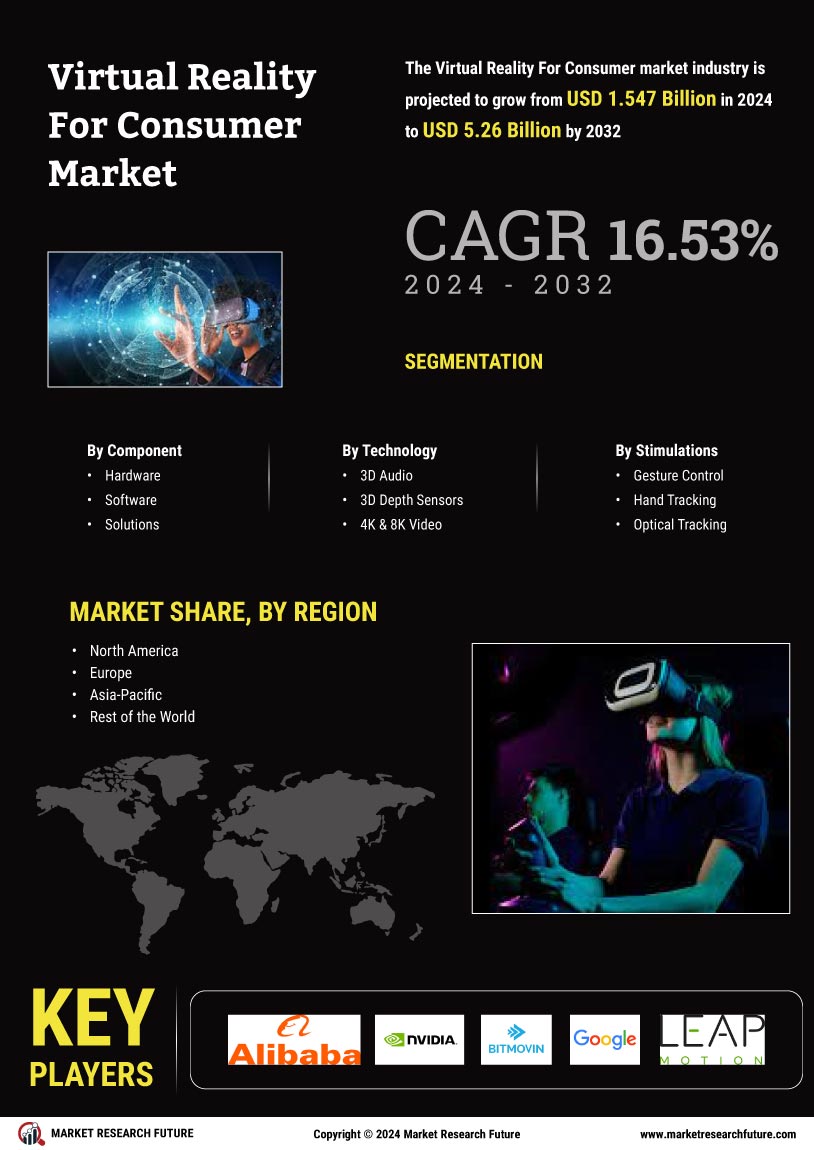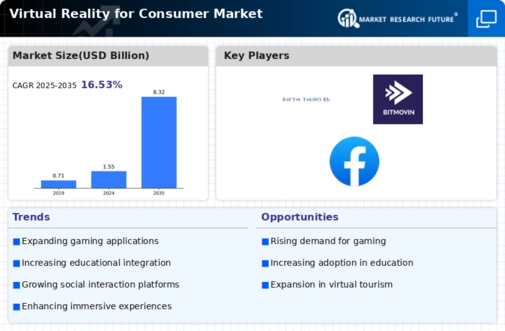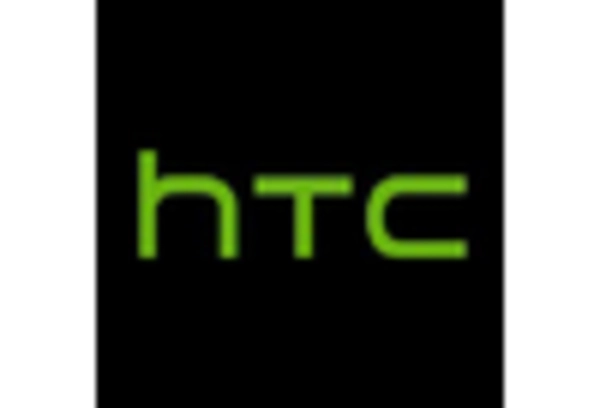Leading market players are investing heavily in research and development in order to expand their product lines, which will help the Virtual Reality for Consumer market, grow even more. Market participants are also undertaking a variety of strategic activities to expand their global footprint, with important market developments including new product launches, contractual agreements, mergers and acquisitions, higher investments, and collaboration with other organizations. To expand and survive in a more competitive and rising market climate, Virtual Reality for Consumer industry must offer cost-effective items.
Manufacturing locally to minimize operational costs is one of the key business tactics used by manufacturers in the global Virtual Reality for Consumer industry to benefit clients and increase the market sector. In recent years, the Virtual Reality for Consumer industry has offered some of the most significant advantages to medicine.
Major players in the Virtual Reality for Consumer market, including Alibaba Group Holding Limited (China), Nvidia Corporation (U.S.) com, Inc. (U.S.), Bitmovin (Austria), Google LLC (U.S.) Leap Motion, Inc. (U.S.) nDreams, Ltd. (U.S.), Sony Corporation (Japan), Microsoft Corporation (U.S), Facebook, Inc. (U.S.), Binary VR Inc. (U.S.), Leap Motion, Inc. (U.S.) and others, are attempting to increase market demand by investing in research and development operations.
Alibaba Group Holding Ltd. (Alibaba Group) provides e-commerce and technology infrastructure services. The company provides the essential technology foundation retailers, brands, merchants, and companies need to market, sell, and run their enterprises online. Its firms are made up of core commerce, digital media and entertainment, cloud computing, and other innovative initiatives. Alibaba Group provides services through its subsidiaries, including Taobao, Tmall, Freshippo, Aliexpress, Lazada, Alibaba.com, 1688.com, ele.me, Youku, DingTalk, Alimama, Alibaba Cloud, and Cai Niao. The Koubei and Cainiao Network is also used to help logistics.
The corporation does business in a number of nations, including Hong Kong, China, Taiwan, the US, the UK, Singapore, Korea, Italy, France, Germany, the Netherlands, Japan, Australia, and New Zealand. The Alibaba Group's corporate headquarters are in Hangzhou, Zhejiang, China.
Microsoft Corp. (Microsoft) offers a variety of software-related services, including development, licensing, and support. The company offers a wide range of server applications, desktop and server administration tools, video games, cross-device productivity tools, business solution tools, and operating systems. It also offers training and certification services. It also develops, manufactures, and sells hardware products like PCs, tablets, game consoles, and other cutting-edge technology. Among the many services the business provides are consulting, cloud-based solutions, and solution support. Microsoft markets, distributes, and sells its goods through original equipment manufacturers, distributors, resellers, online marketplaces, Microsoft stores, and other partner channels.
The business has operations in the Americas, Europe, Asia-Pacific, Middle East, and Africa. Microsoft's headquarters are in Redmond, Washington, a city in the US.

















Leave a Comment